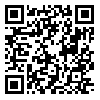Volume 15, Issue 5 (2013)
JAST 2013, 15(5): 879-887 |
Back to browse issues page
Download citation:
BibTeX | RIS | EndNote | Medlars | ProCite | Reference Manager | RefWorks
Send citation to:



BibTeX | RIS | EndNote | Medlars | ProCite | Reference Manager | RefWorks
Send citation to:
Zenouzi A, Ghobadian B, Hejazi M A, Rahnemoon P. Harvesting of Microalgae Dunaliella salina Using Electroflocculation. JAST 2013; 15 (5) :879-887
URL: http://jast.modares.ac.ir/article-23-4125-en.html
URL: http://jast.modares.ac.ir/article-23-4125-en.html
1- Department of Agricultural Machinery, Faculty of Agriculture, Tarbiyat Modares University, Tehran,
Islamic Republic of Iran.
2- Agricultural Biotechnology Research Institute of Iran, Branch for North West and West, Tabriz, Islamic Republic of Iran.
3- Department of Food Science and Technology, Faculty of Agriculture, Tabriz University. Tabriz, Islamic Republic of Iran.
2- Agricultural Biotechnology Research Institute of Iran, Branch for North West and West, Tabriz, Islamic Republic of Iran.
3- Department of Food Science and Technology, Faculty of Agriculture, Tabriz University. Tabriz, Islamic Republic of Iran.
Abstract: (8153 Views)
One of the important bottle-necks in production of microalgae based biodiesel is the lack of an efficient method for harvesting of microalgae from the culture medium. In this study, the electroflocculation method was developed for harvesting of microalgae Dunaliella cells from culture medium. The effect of several parameters such as the current density, electrical conductivity of culture medium, time, electrode gap, and electrode type on harvesting efficiency and energy consumption were also determined. The maximum harvesting efficiency of this method was 97.44% at EC= 1.35 S m-1 and current density of 90 A m-2 during 3 minutes electroflocculation process in a 300 ml beaker. The maximum efficiency was achieved by aluminum electrodes with 1 cm distance between electrodes and the maximum energy consumption for this practice was 0.621 kW h m-3. It was concluded that electroflocculation is an efficient and cost effective method for microalgae harvesting.
Received: 2011/12/23 | Accepted: 2012/11/21 | Published: 2013/09/1
| Rights and permissions | |
 |
This work is licensed under a Creative Commons Attribution-NonCommercial 4.0 International License. |







